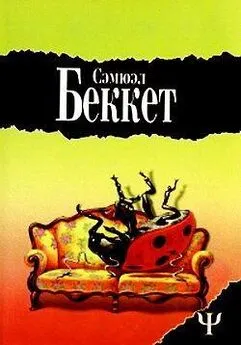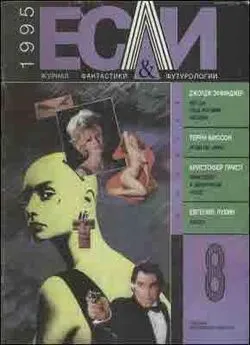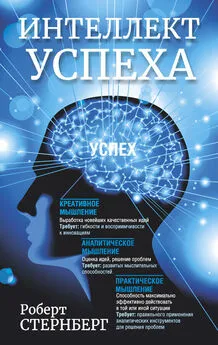Сэмюел Стернберг - Трещина в мироздании [litres]
- Название:Трещина в мироздании [litres]
- Автор:
- Жанр:
- Издательство:Литагент Corpus
- Год:2019
- Город:Москва
- ISBN:978-5-17-109309-9
- Рейтинг:
- Избранное:Добавить в избранное
-
Отзывы:
-
Ваша оценка:
Сэмюел Стернберг - Трещина в мироздании [litres] краткое содержание
Трещина в мироздании [litres] - читать онлайн бесплатно ознакомительный отрывок
Интервал:
Закладка:
20
S. Rogers, “Reflections on Issues Posed by Recombinant DNA Molecule Technology. II”, Annals of the New York Academy of Sciences 265 (1976): 66–70.
21
T. Friedmann and R. Roblin, “Gene Therapy for Human Genetic Disease?”, Science 175 (1972): 949–955.
22
T. Friedmann, “Stanfield Rogers: Insights into Virus Vectors and Failure of an Early Gene Therapy Model”, Molecular Therapy 4 (2001): 285–288.
23
В мае 2016-го Европейская комиссия дала разрешение на производство и использование стримвелиса, однако к марту 2018-го было продано всего пять курсов препарата, что и неудивительно: за год в ЕС выявляется лишь 15 случаев ТКИД с недостаточностью аденозиндезаминазы, при этом стоимость препарата – 594 тысячи евро.
24
Слово “философия” присутствует в этом названии исторически, а сама степень присуждается практически во всех научных областях ( примеч. науч. ред. ).
25
Постдок, или постдокторант, – ученый, недавно получивший степень доктора философии ( Ph. D. ) и выполняющий новую, более сложную научную работу. В постдокторантуру набирают по конкурсу и на непродолжительное время, например 2–3 года. В системе научных должностей стран бывшего СССР, перенятой от Союза, аналога постдоков нет. Наиболее близкая к ним категория в российских реалиях – “молодой ученый”, т. е. человек до 35 лет, получивший степень кандидата наук.
26
K. R. Folger et al., “Patterns of Integration of DNA Microinjected into Cultured Mammalian Cells: Evidence for Homologous Recombination Between Injected Plasmid DNA Molecules”, Molecular and Cellular Biology 2 (1982): 1372–1387.
27
Здесь описываются конъюгация и кроссинговер во время первого деления мейоза. В результате этого деления из одной клетки с двойным набором хромосом получается две клетки, каждая с одинарным набором хромосом.
28
Там же.
29
O. Smithies et al., “Insertion of DNA Sequences into the Human Chromosomal Beta-Globin Locus by Homologous Recombination”, Nature 317 (1985): 230–234.
30
K. R. Thomas, K. R. Folger, and M. R. Capecchi, “High Frequency Targeting of Genes to Specific Sites in the Mammalian Genome”, Cell 44 (1986): 419–428.
31
S. L. Mansour, K. R. Thomas, and M. R. Capecchi, “Disruption of the Proto-Oncogene Int-2 in Mouse Embryo-Derived Stem Cells: A General Strategy for Targeting Mutations to Non-Selectable Genes”, Nature 336 (1988): 348–352.
32
J. Lyon and Peter Gorner, Altered Fates: Gene Therapy and the Retooling of Human Life (New York: Norton, 1995), 556.
33
J. W. Szostak et al., “The Double-Strand-Break Repair Model for Recombination”, Cell 33 (1983): 25–35.
34
Sce в названии фермента указывает на организм, из которого данный белок был впервые получен. Это сокращение от Saccharomyces cerevisiae , латинского названия дрожжей.
35
P. Rouet, F. Smih, and M. Jasin, “Introduction of Double-Strand Breaks into the Genome of Mouse Cells by Expression of a Rare-Cutting Endonuclease”, Molecular and Cellular Biology 14 (1994): 8096–8106.
36
Y. G. Kim, J. Cha, and S. Chandrasegaran, “Hybrid Restriction Enzymes: Zinc Finger Fusions to Fok I Cleavage Domain”, Proceedings of the National Academy of Sciences of the United States of America 93 (1996): 1156–1160.
37
M. Bibikova et al., “Stimulation of Homologous Recombination Through Targeted Cleavage by Chimeric Nucleases”, Molecular and Cellular Biology 21 (2001): 289–297.
38
M. Bibikova et al., “Targeted Chromosomal Cleavage and Mutagenesis in Drosophila Using Zinc-Finger Nucleases”, Genetics 161 (2002): 1169–1175.
39
M. H. Porteus and D. Baltimore, “Chimeric Nucleases Stimulate Gene Targeting in Human Cells”, Science 300 (2003): 763.
40
F. D. Urnov et al., “Highly Efficient Endogenous Human Gene Correction Using Designed Zinc-Finger Nucleases”, Nature 435 (2005): 646–651.
41
S. Chandrasegaran and D. Carroll, “Origins of Programmable Nucleases for Genome Engineering”, Journal of Molecular Biology 428 (2016): 963–989.
42
Если точнее, премию Чеку дали за обнаружение автокаталитических свойств рибозимов – то есть не только их способности к сплайсингу (сшиванию фрагментов) самих себя, но и их способности к разрезанию самих себя.
43
Crisper – выдвижной контейнер в холодильнике для хранения фруктов и овощей.
44
В оригинале – senile felines .
45
G. W. Tyson and J. F. Banfield, “Rapidly Evolving CRISPRs Implicated in Acquired Resistance of Microorganisms to Viruses”, Environmental Microbiology 10 (2008): 200–207.
46
F. J. Mojica et al., “Biological Significance of a Family of Regularly Spaced Repeats in the Genomes of Archaea, Bacteria and Mitochondria”, Molecular Microbiology 36 (2000): 244–246.
47
F. J. Mojica et al., “Intervening Sequences of Regularly Spaced Prokaryotic Repeats Derive from Foreign Genetic Elements”, Journal of Molecular Evolution 60 (2005): 174–182; C. Pourcel, G. Salvignol, and G. Vergnaud, “CRISPR Elements in Yersinia pestis Acquire New Repeats by Preferential Uptake of Bacteriophage DNA, and Provide Additional Tools for Evolutionary Studies”, Microbiology 151 (2005): 653–663; A. Bolotin et al., “Clustered Regularly Interspaced Short Palindrome Repeats (CRISPRs) Have Spacers of Extrachromosomal Origin”, Microbiology 151 (2005): 251–261.
48
A. F. Andersson and J. F. Banfield, “Virus Population Dynamics and Acquired Virus Resistance in Natural Microbial Communities”, Science 320 (2008): 1047–1050.
49
K. S. Makarova et al., “A Putative RNA-Interference-Based Immune System in Prokaryotes: Computational Analysis of the Predicted Enzymatic Machinery, Functional Analogies with Eukaryotic RNAi, and Hypothetical Mechanisms of Action”, Biology Direct 1 (2006): 7.
50
D. H. Duckworth, “Who Discovered Bacteriophage?”, Bacteriological Reviews 40 (1976): 793–802.
51
Институт бактериофагов в Тбилиси основал Георгий Григорьевич Элиава в 1923 году. Д’Эрелль приехал туда значительно позже – в 1934-м. Тем не менее в 1923-м двое ученых уже были знакомы.
52
C. Zimmer, A Planet of Viruses. Chicago: University of Chicago Press, 2011. Книга переведена на русский: Карл Циммер. Планета вирусов / Пер. А. Рангулова. Ростов-на-Дону: Феникс, 2012.
53
G. Naik, “To Fight Growing Threat from Germs, Scientists Try Old-fashioned Killer”, Wall Street Journal , January 22, 2016.
54
G. P. C. Salmond and P. C. Fineran, “A Century of the Phage: Past, Present and Future”, Nature Reviews Microbiology 13 (2015): 777–786.
55
F. Rohwer et al., Life in Our Phage World (San Diego: Wholon, 2014).
56
Даудна, вероятнее всего, описывает строение фага лямбда, геном которого представлен молекулой ДНК. Однако бактериофаги вместо ДНК могут содержать и РНК, что в тексте не указано.
57
S. J. Labrie, J. E. Samson, and S. Moineau, “Bacteriophage Resistance Mechanisms”, Nature Reviews Microbiology 8 (2010): 317–327.
58
R. Jansen et al., “Identification of Genes That Are Associated with DNA Repeats in Prokaryotes”, Molecular Microbiology 43 (2002): 1565–1575.
59
Y. Ishino et al., “Nucleotide Sequence of the Iap Gene, Responsible for Alkaline Phosphatase Isozyme Conversion in Escherichia coli , and Identification of the Gene Product”, Journal of Bacteriology 169 (1987): 5429–5433.
60
R. Barrangou et al., “CRISPR Provides Acquired Resistance Against Viruses in Prokaryotes”, Science 315 (2007): 1709–1712.
61
A. Bolotin et al., “Complete Sequence and Comparative Genome Analysis of the Dairy Bacterium Streptococcus thermophilus ”, Nature Biotechnology 22 (2004): 1554–1558.
62
M. B. MarcÓ, S. Moineau, and A. Quiberoni, “Bacteriophages and Dairy Fermentations”, Bacteriophage 2 (2012): 149–158.
63
S. J. J. Brouns et al., “Small CRISPR RNAs Guide Antiviral Defense in Prokaryotes”, Science 321 (2008): 960–964.
64
T.-H. Tang et al., “Identification of Novel Non-Coding RNAs as Potential Antisense Regulators in the Archaeon Sulfolobus solfataricus ”, Molecular Microbiology 55 (2005): 469–481.
65
Но это происходит гораздо реже, чем в случае ДНК, из-за разницы в сахарах. В каждом нуклеотиде РНК содержится сахар рибоза, и у нее по сравнению с дезоксирибозой ДНК один атом кислорода “лишний”. Именно он затрудняет образование двойных спиралей РНК.
Читать дальшеИнтервал:
Закладка:
![Обложка книги Сэмюел Стернберг - Трещина в мироздании [litres]](/books/1076035/semyuel-sternberg-trechina-v-mirozdanii-litres.webp)




![Григорий Кузнецов - Руны. Ключи к энергии мироздания [litres]](/books/1057031/grigorij-kuznecov-runy-klyuchi-k-energii-mirozdaniya.webp)
![Сэмюел Сайкс - Семь клинков во мраке [litres]](/books/1057593/semyuel-sajks-sem-klinkov-vo-mrake-litres.webp)
![Сэмюел Сайкс - Десять железных стрел [litres]](/books/1143629/semyuel-sajks-desyat-zheleznyh-strel-litres.webp)
